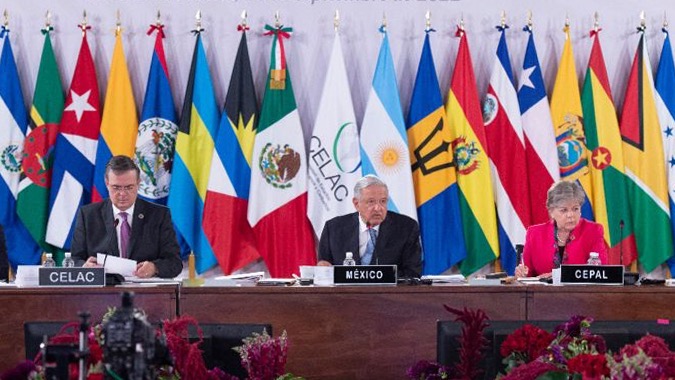Navigating the Demographic Shift: Challenges and Opportunities in South American Elderly Care
South America is experiencing a significant demographic transition, characterized by a rapidly expanding elderly population. This phenomenon, driven by increased life expectancy and declining fertility rates, presents both unprecedented challenges and substantial opportunities for the region's nations. This article analyzes the critical issues surrounding elderly care and social support, emphasizing the potential for inter-American collaboration and the application of relevant sociological and economic theories. Key concepts explored include the demographic transition model, the social support network theory, and the concept of age-friendly environments.
Understanding the Demographic Transition: A South American Context
The demographic transition model illustrates the shift from high birth and death rates to low birth and death rates as societies develop. South America is currently experiencing the later stages of this transition, resulting in a burgeoning elderly population. This necessitates a paradigm shift in healthcare infrastructure, social security systems, and public policy to meet the evolving needs of this growing demographic. Failure to proactively adapt will result in significant societal strain and diminished quality of life for older adults. Applying this model helps predict future needs and allocate resources effectively.
Healthcare Infrastructure Development: Addressing Capacity Gaps
The increased elderly population places immense pressure on existing healthcare systems. To ensure equitable access to high-quality geriatric care, significant investments are required. This involves expanding geriatric specialist training programs, modernizing healthcare facilities, and strategically implementing telehealth solutions to overcome geographical barriers. Furthermore, addressing health disparities between urban and rural populations, a key element of health equity, is crucial. The application of the Health Belief Model can be instrumental in improving health-seeking behavior among older adults, leading to better health outcomes.
Social Support Networks: Combating Age-Related Isolation
Social support network theory highlights the crucial role of social connections in maintaining well-being. For older adults, robust social networks are essential to combatting isolation and loneliness, which are strongly correlated with declining physical and mental health. Investment in community centers, intergenerational programs (facilitated by the intergroup contact theory which emphasizes positive interactions), and volunteer initiatives strengthens these networks and significantly improves the quality of life for older individuals.
Financial Security in Old Age: Ensuring Economic Well-being
Financial insecurity significantly impacts the well-being of older adults. Strengthening pension systems, exploring universal basic income programs (informed by social welfare principles), and implementing targeted assistance programs for vulnerable elderly individuals are crucial to ensure dignified retirement. This requires careful consideration of economic principles, including sustainability and equitable distribution of resources. The application of life-cycle models helps predict long-term financial needs and design suitable interventions.
Age-Friendly Environments: Promoting Active Aging
Creating age-friendly communities involves designing accessible infrastructure (applying principles of universal design), reliable transportation systems, and recreational activities tailored to the needs of older adults. This approach promotes active aging, maintaining independence and social participation among the elderly, thus enhancing their quality of life and promoting positive aging. The concept of environmental gerontology plays a key role in this endeavor.
Caregiver Support: Recognizing an Untapped Resource
Family caregivers often bear the brunt of eldercare responsibilities, leading to caregiver burden and burnout. Providing comprehensive support—including respite care, training programs, and mental health services—is vital to both the well-being of older adults and their caregivers. This acknowledges the significant contributions of informal caregivers and seeks to mitigate their challenges through evidence-based interventions.
Leveraging Technology: Enhancing Access to Care and Independence
Technological advancements offer immense potential for improving eldercare. Telemedicine, assistive technologies, and smart home devices enhance healthcare access, promote independent living, and facilitate remote monitoring. Strategic investment in technology and training programs is crucial for realizing the full potential of these advancements.
Mental Health: Addressing a Growing Concern
Mental health issues are prevalent amongst older adults. Addressing this requires increased investment in age-appropriate mental health services, public awareness campaigns to destigmatize mental illness, and accessible mental health promotion initiatives. Promoting mental well-being is crucial for enhancing overall quality of life.
Inter-American Collaboration: Sharing Best Practices
North and South America can significantly benefit from exchanging best practices in elderly care. Collaboration fosters innovative solutions and promotes a more holistic approach to address the challenges of an aging population, leveraging the expertise and resources of both regions.
Conclusions and Recommendations
South America faces significant challenges but also opportunities in addressing the needs of its expanding elderly population. A multi-faceted approach is crucial, encompassing healthcare infrastructure development, robust social support systems, financial security measures, age-friendly environments, caregiver support, technological integration, and attention to mental health. Governments must play a central role in policy development and resource allocation. Inter-American collaboration can facilitate knowledge sharing and the development of innovative solutions. Further research should focus on evaluating the effectiveness of various interventions and adapting them to the specific cultural and socioeconomic contexts of different South American nations. This holistic approach, guided by relevant sociological and economic theories, offers the best hope of creating a society that values, respects, and supports its aging population.
Reader Pool: What innovative policy recommendations, grounded in relevant social and economic theories, would you propose to address the specific challenges of aging populations in diverse South American contexts?



